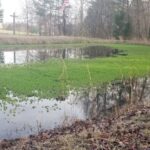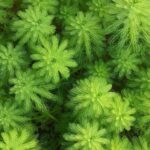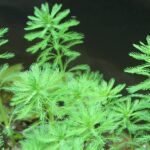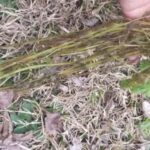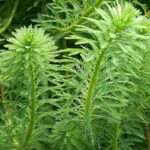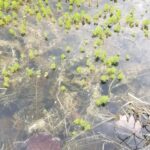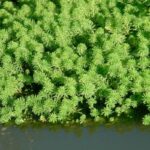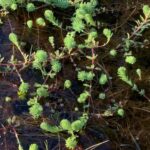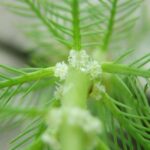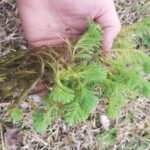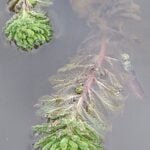Parrot Feather
Other Common Names: parrotfeather, parrot feather watermilfoil, Brazilian watermilfoil, red-stemmed parrot feather, water feather
(Myriophyllum aquaticum)
Non-Native
Parrot feather has feathered leaves that come above the water’s surface and can look like they are made of plastic.
Description
Parrot feather has leaves that are light green to blue green in whorls of four to six. They are stiff, three-fourths to two inches long, and divided into ten or more thread like sections.
Leaves have more upper divisions than lower divisions; upper divisions are up to one-fourth of an inch long. The leaves can look a little plasticky, especially the few inches that stick up above the water’s surface.
Parrot feather stems are typically also light green to blue green and branching. The flowers are small and white, above the water where leaves attach to the stem.
Parrot feather grows in at least 26 states across the country, and there are only female plants in the United States. No seeds are produced on the plants in North America. The foliage dies off in winter, and the roots produce new shoots in the spring. The stems and leaves of parrot feather can stand up out of the water nearly a foot.
This invasive species can out compete native plants and attract unwanted insects, especially mosquitoes.
Management Options
Click here for more information on how to control parrot feather.
Location
Parrot feather can be found across the southern United States and along both coastlines.
Propagation
roots, fragments
Management Options
Click here for more information on how to control parrot feather.


